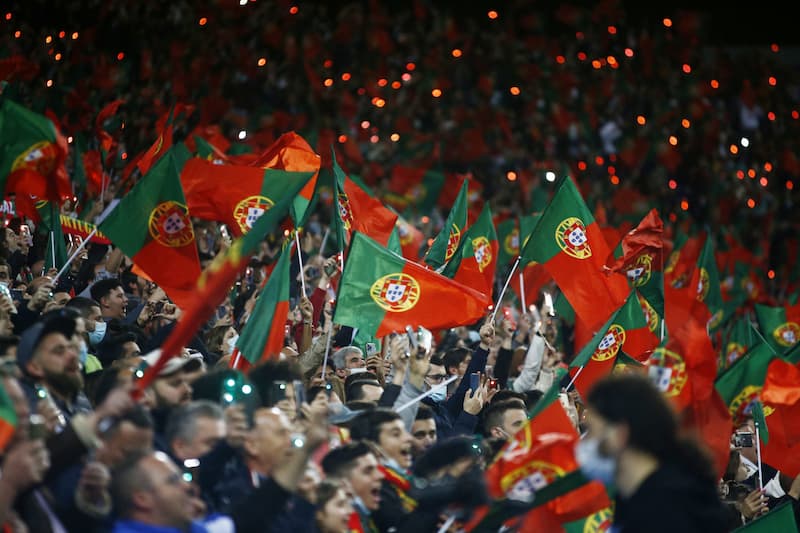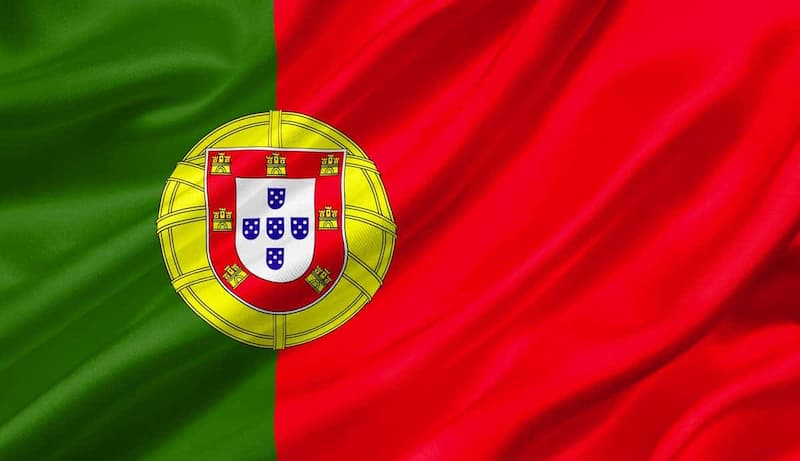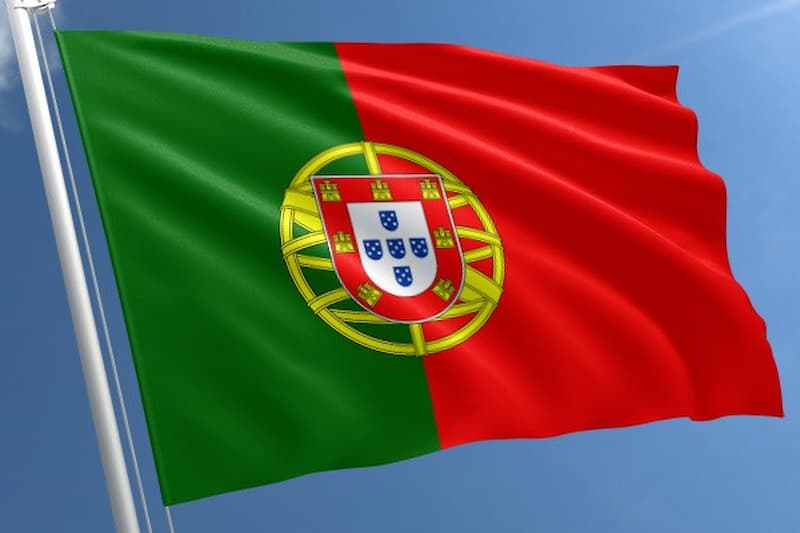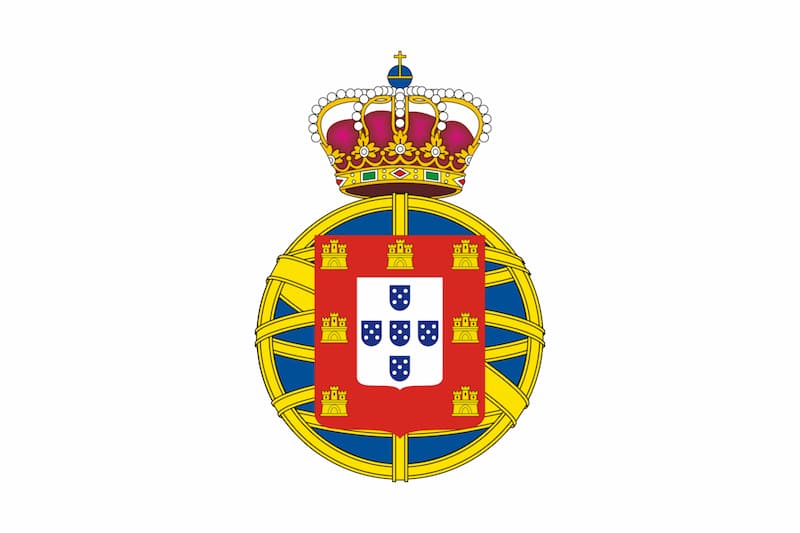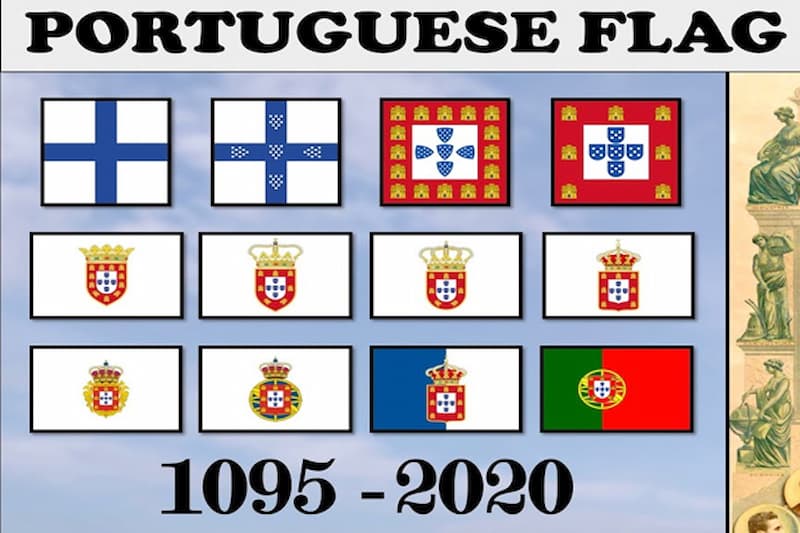Get free consultation
Fill out the form and we will contact you
The flag of Portugal has undergone many changes throughout history. Let’s explore the Portuguese flag to understand its meaning, characteristics, and colors in the following article.
Records show that since its formation, Portugal has changed its national flag many times. Specifically:
The flag of Portugal has been changed 14 times
Year 1095: The flag featured two colors, blue and white, with the shield of Count Henry during the wars against the Moors.
During King Afonso III: The national flag added the coat of arms printed on a white square, with a red inner border on the blue shield and small yellow castles.
During the reign of King Peter II: The Portuguese flag was adjusted by adding a small velvet crown to align with the political system.
Year 1800: History records that Miguel deposed his sister, Queen Maria II, and proclaimed himself king. Under his rule, Miguel abolished the liberal constitution and governed as an absolute monarch. The flag at this time was designed with two main colors: navy blue and white.
Year 1834: King Miguel was exiled, Queen Maria II returned, and the flag reflected liberal ideals.
Year 1910: Portugal abolished the monarchy and adopted a green and red bicolor flag.
From 1910 onward: With the establishment of the Portuguese Republic, the flag’s design has remained unchanged.
The Portuguese flag is called Bandeira de Portugal (in Portuguese). It was officially adopted on June 19, 1911, to represent the nation. Featuring two main colors—green and red—with a 2:3 ratio, the coat of arms is positioned at the boundary between the green and red sections. The coat of arms is uniquely designed as a circle with a diameter equal to half the height of the flag.
The coat of arms is positioned at the boundary between the two colors of the flag
Structure of the coat of arms on the Portuguese flag:
A red shield featuring seven golden castles of the Kingdom of Castile.
A smaller white shield placed on the red shield.
Five blue shields arranged in a cross on the white shield.
Each blue shield contains five small white coins.
The shields are set on a circle stylized like a globe.
With the establishment of the Republic, the Portuguese flag carries rich symbolism of victory and reverence. Its unique design reflects the long historical formation and development of Portugal.
The primary red and green colors on the flag carry multiple meanings, specifically:
Red: Symbolizes the sacrifices of generations of Portuguese people through wars for independence and peace.
Green: Represents hope for national development and a vibrant life, symbolizing the aspirations of the 1910 revolution when the monarchy was overthrown and the Republic was established.
The main colors of the Portuguese flag are green and red
The national coat of arms of Portugal is placed at the center of the flag and consists of two main elements:
Golden armillary sphere: Symbolizing the Age of Discovery, when Portuguese explorers like Magellan and Gama sailed across the oceans. The armillary sphere reflects Portugal’s significant role in global exploration from the 15th century.
Red shield with five small blue shields: Representing the five wounds of Jesus (according to legend, Jesus helped King Afonso I defeat the Moors).
Border with seven golden castles: Reflecting the religious sites Portugal captured during the battles with the Moors, symbolizing military power and territorial protection.
The Armillary Sphere on the Portuguese Flag
The shields on the flag are seen as symbols of Portugal’s past victories. In addition, the five small blue shields represent the five Moorish kings defeated by King Afonso I. The white dots on the blue shields symbolize the five wounds of Christ during the crucifixion.
The Portuguese flag is considered one of the most symbolically rich flags in the world, incorporating religious symbols, military achievements, maritime science, and political revolution. It represents a historic milestone for the nation, with the coat of arms on the flag reflecting these elements:
The Portuguese Flag was designed by three artists
The flag has undergone many different design changes.
Its original name was 'the dark red flag' – Bandeira Verde Rubra.
The flag was designed by three artists: painter Columbano Bordalo Pinheiro, Abel Botelho, and João Chagas.
This article has provided a comprehensive explanation of the flag of Portugal, helping you gain a better understanding of the country. Follow our page to discover more fascinating insights about countries around the world.
Currently, the Portuguese Golden Visa is a fast and secure pathway to European residency. Quoctichthuhai.com offers Golden Visa services with quick processing times and transparent, reasonable fees, giving you and your family the opportunity to enjoy a high-quality life. Contact us today for personalized consultation on settling in Portugal!
Fill out the form and we will contact you

